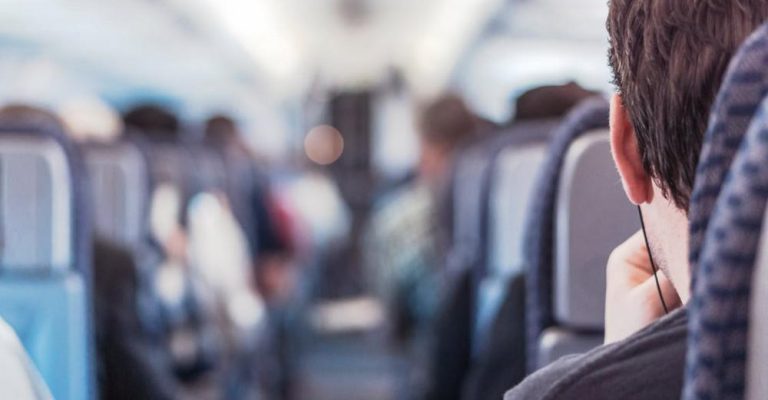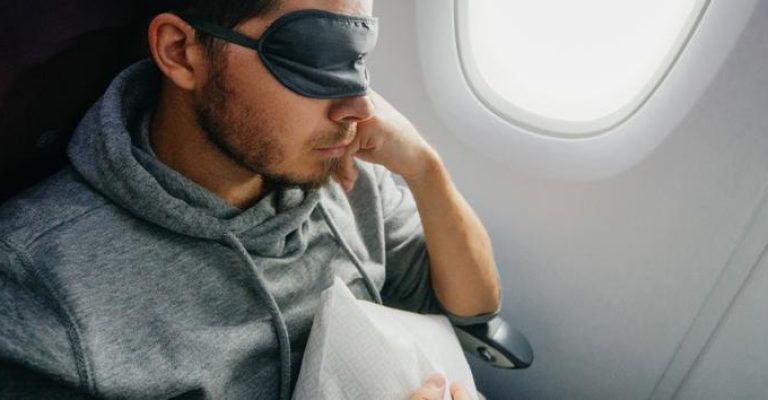
Can you fly with a concussion? The most recent scientific evidence shows that flying after a concussion is safe, but you should wait until the worst symptoms have subsided and your doctor has cleared you to travel.
Concussions are classified as minor traumatic brain injuries. When flying after a traumatic brain injury, you must use extreme care. It’s also reassuring to know that recent research discovered that flying with a concussion does not seem to exacerbate the severity or symptoms of the concussion.
In this post, we’ll go through the dangers of flying after a brain injury and what you can do to be safe. Before making any trip arrangements, you must check with your doctor and get their approval.
A concussion is transient brain damage that happens after a mild hit to the head. It causes a brief disturbance in normal brain function due to nerve and blood vessel damage in your brain, which disrupts chemical processes and makes it difficult to focus, balance, and remain awake.
A severe headache, dizziness, memory loss, feeling ill, balance issues, and changes in behaviour and vision are the most common symptoms of a concussion. Most individuals with concussions only have symptoms for a few days, but it might take up to two weeks to feel entirely normal again.
The majority of the time, flying with a concussion is safe. You should always see a doctor or medical practitioner before flying after a concussion, but as long as no major problems have been detected from whatever caused the condition, flying should be OK.
If you have just had a concussion, you should avoid flying since symptoms might worsen before they recover. If you have a concussion, you may also feel extremely nauseated, making lengthy flights more uncomfortable.
While traveling with a concussion is generally safe, several features of air travel may aggravate your symptoms. Travel-related stress and worry, bright lights and loud sounds at the airport, and the sensation of take-off, landing, and turbulence may all make a concussion seem much worse.

Can you fly with a concussion? Understanding what occurs to the body during flying helps to understand the hazards involved with flying after brain damage.
Flying at a high altitude is required for air travel. The human body, however, cannot endure such high altitudes. This aircraft has pressurized chambers built in to maintain the body in a balanced atmospheric pressure.
When the body is immersed in a lower atmospheric pressure (such as at high altitude), hypobaric hypoxia may occur. This results in less oxygen being delivered to the tissues that support body fluids and the brain. According to studies, flying causes a large drop in an individual’s partial pressure and oxygen, which is especially concerning after a brain injury.
When pressure fluctuations cause less oxygen in a brain injury survivor, the results of the brain damage might fluctuate or worsen. Headaches, dizziness, lethargy, and memory or concentration problems are all possible side symptoms of a brain injury.
Brain damage may also make it harder to absorb stimuli, including lighting, noises, crowds, announcements, and directions, all of which are common throughout a flight and airport experience.
The majority of specialists feel that flying after a brain injury is quite safe. While there is no set time range for all survivors, it is strongly advised to wait until acute symptoms have passed.
Furthermore, if the accident happened within ten days of the journey, many airlines need a certified medical exemption from your primary care practitioner or specialist. As a result, we urge that you wait at least four weeks before traveling and consult with and acquire authorization from your doctor.
Though each situation is unique, it is strongly advised to postpone travel if you are presently suffering from edema, headaches, or any other concerns.
Survivors may report that their symptoms intensify after flying, making the experience unpleasant. As a result, before making trip plans, speak with your doctor to acquire a list of precautions.
You are one step closer to travelling if your symptoms have abated and your doctor has cleared you. Now is the time to gather all of the necessary items to guarantee a smooth and safe journey. Here are some pointers to get you there.

Make your first flight following a brain injury as brief as possible. Long-haul flights are typically those lasting more than 6 hours, whilst short flights are those lasting 3 hours or fewer. Shorter flights reduce your exposure to altitude fluctuations, which reduces your risk of developing new or reoccurring problems.
Planning and navigating airports, as well as keeping track of all your possessions, may require a lot of energy and cognitive processing. Because brain damage often affects cognitive abilities, travelling with a partner might help you avoid being overwhelmed.
After a brain injury, it is critical to avoid travelling alone as much as possible. However, if you must fly alone, airlines provide assistance to passengers. Make sure to check about passenger support services with your airline.
After a brain injury, survivors may become more sensitive to sensory inputs, which may make flying even more difficult. Airplanes, for example, are confined environments that may carry a huge number of people, making them congested and loud.
Wearing dark glasses, earplugs, or noise-canceling headphones with relaxing music are some strategies to alleviate sensory overload. Dark glasses may assist lessen eye strain from too bright lighting, and earplugs can help block out the noise.
So, can you fly with a concussion? Flying after a brain injury is generally safe as long as the brain has had the time to recover and your symptoms are not severe.
The time it takes for the brain to recover properly varies from person to person, but airlines suggest waiting at least 10 days following an event.
Flying after a brain injury might be intimidating, but it does not have to be. The idea is to give your brain ample time to repair and your symptoms to go away. Avoiding any triggers will also make your trip more enjoyable.
Take the necessary precautions and check with your doctor or expert beforehand. Best wishes!